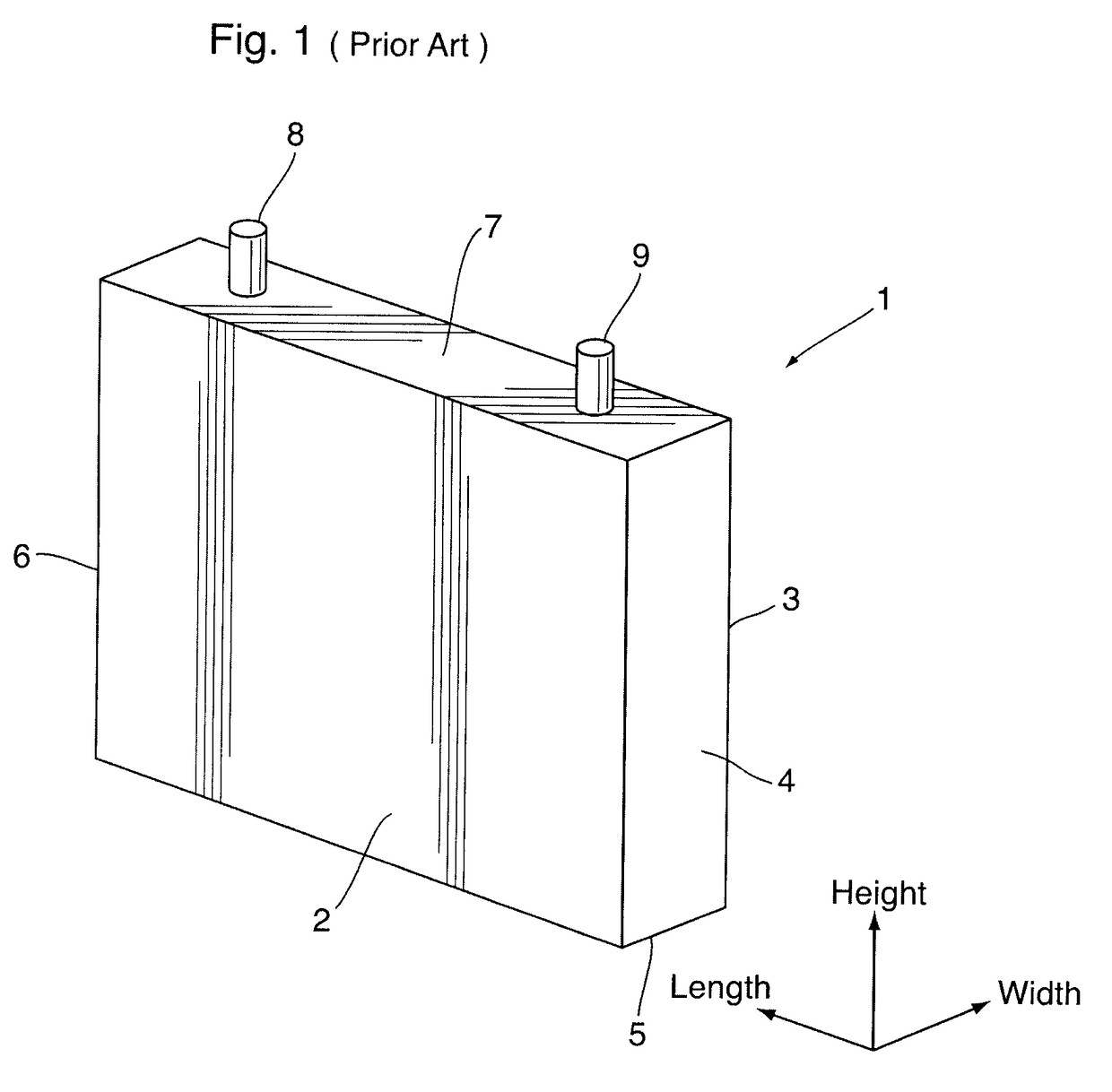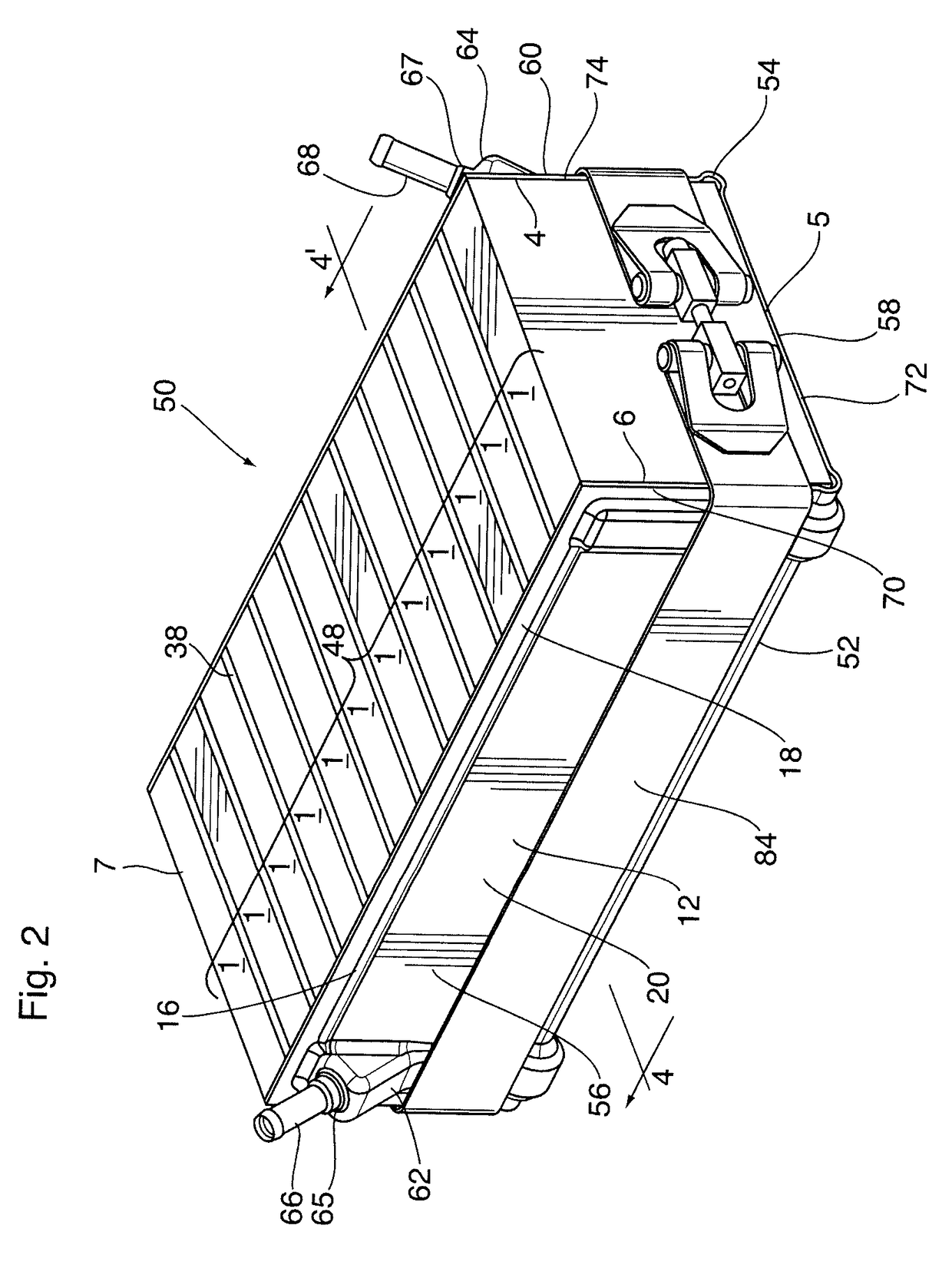Multi-sided heat exchangers with compliant heat transfer surfaces
- Summary
- Abstract
- Description
- Claims
- Application Information
AI Technical Summary
Benefits of technology
Problems solved by technology
Method used
Image
Examples
first embodiment
[0056]A heat exchanger 50 is now described below with reference to FIGS. 2 to 9.
[0057]Heat exchanger 50 is an example of a panel-type heat exchanger having one or more linear bends so as to define a multi-faceted heat exchanger structure comprising a plurality of fluid-carrying panels, wherein each of the panels comprises one facet of the overall structure. In this embodiment, there are two linear bends 52, 54 which are parallel to one another and spaced apart from one another. The bends 52, 54 each form an angle of about 90°, and together define an open-ended, three-sided enclosure comprising first, second and third fluid-carrying panels 56, 58, 60. The first and third fluid-carrying panels 56, 60 comprise opposed sides of the three-sided enclosure and the second fluid-carrying panel 58 comprises the base of the enclosure.
[0058]In heat exchanger 50, each of the fluid-carrying panels 56, 58, 60 has an inwardly facing side and an outwardly facing side. The inwardly facing sides of f...
second embodiment
[0087]A heat exchanger 100 is now described with reference to FIGS. 10 to 12. Heat exchanger 100 shares a number of elements in common with heat exchanger 50. Like reference numerals are used to refer to like elements in the following description and in the drawings, and the above description of these elements in connection with heat exchanger 50 also applies to heat exchanger 100.
[0088]Heat exchanger 100 includes two linear bends 52, 54 so as to define an open-ended three sided enclosure comprising three fluid-carrying panels 56, 58, 60. As in heat exchanger 50, the inwardly facing sides of the fluid-carrying panels are defined by the second plate 14 and the outwardly facing sides are defined by the first plate 12.
[0089]The main difference between the heat exchangers 50 and 100 is that heat exchanger 100 has its first and second manifolds 62, 64 defined on the inside of the three-sided enclosure, such that the first and second manifolds 62, 64 are formed on the second plate 14 rat...
PUM
 Login to View More
Login to View More Abstract
Description
Claims
Application Information
 Login to View More
Login to View More - R&D
- Intellectual Property
- Life Sciences
- Materials
- Tech Scout
- Unparalleled Data Quality
- Higher Quality Content
- 60% Fewer Hallucinations
Browse by: Latest US Patents, China's latest patents, Technical Efficacy Thesaurus, Application Domain, Technology Topic, Popular Technical Reports.
© 2025 PatSnap. All rights reserved.Legal|Privacy policy|Modern Slavery Act Transparency Statement|Sitemap|About US| Contact US: help@patsnap.com



